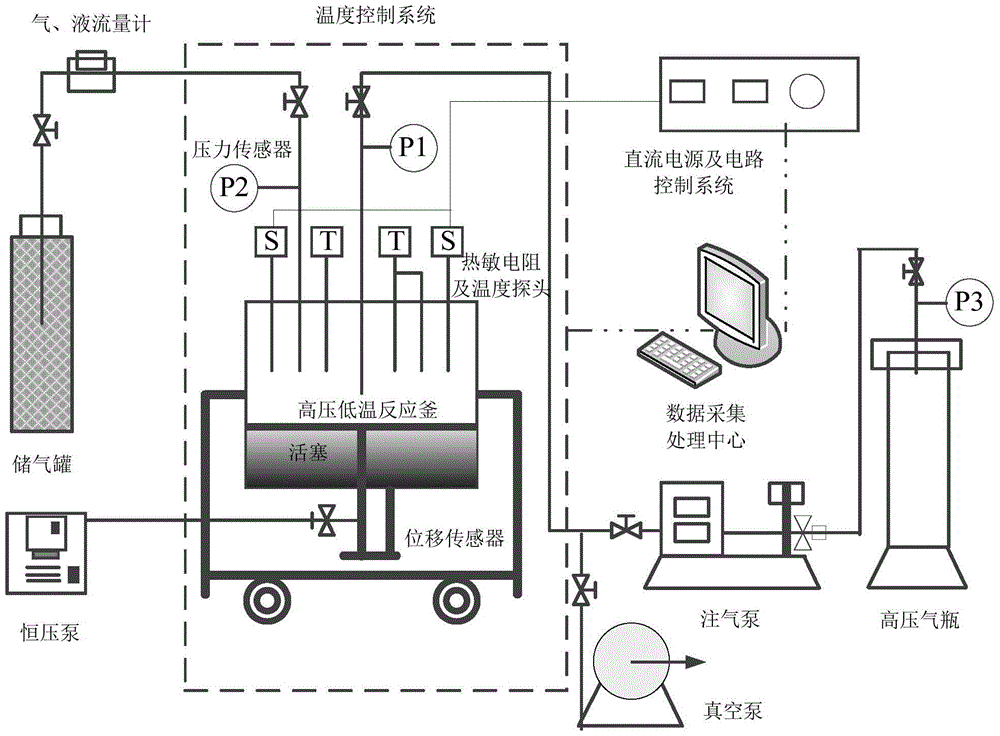An in-situ test device for high-pressure and low-temperature thermal conductivity and heat transfer coefficient
A high-pressure low-temperature, heat transfer coefficient technology, applied in the field of heat transfer testing, can solve the problem of not achieving simultaneous measurement of thermal conductivity and heat transfer coefficient, changes in the physical properties and state of multiphase substances, poor ease of use and operation convenience, etc. It can meet the requirements of the parameters of the equipment, the structure design is compact and reasonable, and it is easy to replace
- Summary
- Abstract
- Description
- Claims
- Application Information
AI Technical Summary
Problems solved by technology
Method used
Image
Examples
Embodiment Construction
[0018] The specific implementation manners of the present invention will be further described below in conjunction with the accompanying drawings and technical solutions.
[0019] Figure 1-4 A high-pressure low-temperature thermal conductivity and heat transfer coefficient in-situ test device is demonstrated. The device mainly consists of two parts. The first part is the thermistor measurement probe, such as figure 1 As shown, first clean the lead wire of the thermistor, insulate it with insulating varnish, and repeat it three times. After testing that the insulation is good, pass the lead wire of the thermistor through the perforated thin steel pipe, and fill the thin steel pipe with epoxy resin, and at the same time Wrap the thermistor wire to stabilize the thermistor, then pass the thermistor wire through the high-pressure sealing device, and at the same time insert the perforated thin steel pipe into the front section of the high-pressure sealing device and fix it with ...
PUM
 Login to View More
Login to View More Abstract
Description
Claims
Application Information
 Login to View More
Login to View More - R&D
- Intellectual Property
- Life Sciences
- Materials
- Tech Scout
- Unparalleled Data Quality
- Higher Quality Content
- 60% Fewer Hallucinations
Browse by: Latest US Patents, China's latest patents, Technical Efficacy Thesaurus, Application Domain, Technology Topic, Popular Technical Reports.
© 2025 PatSnap. All rights reserved.Legal|Privacy policy|Modern Slavery Act Transparency Statement|Sitemap|About US| Contact US: help@patsnap.com



